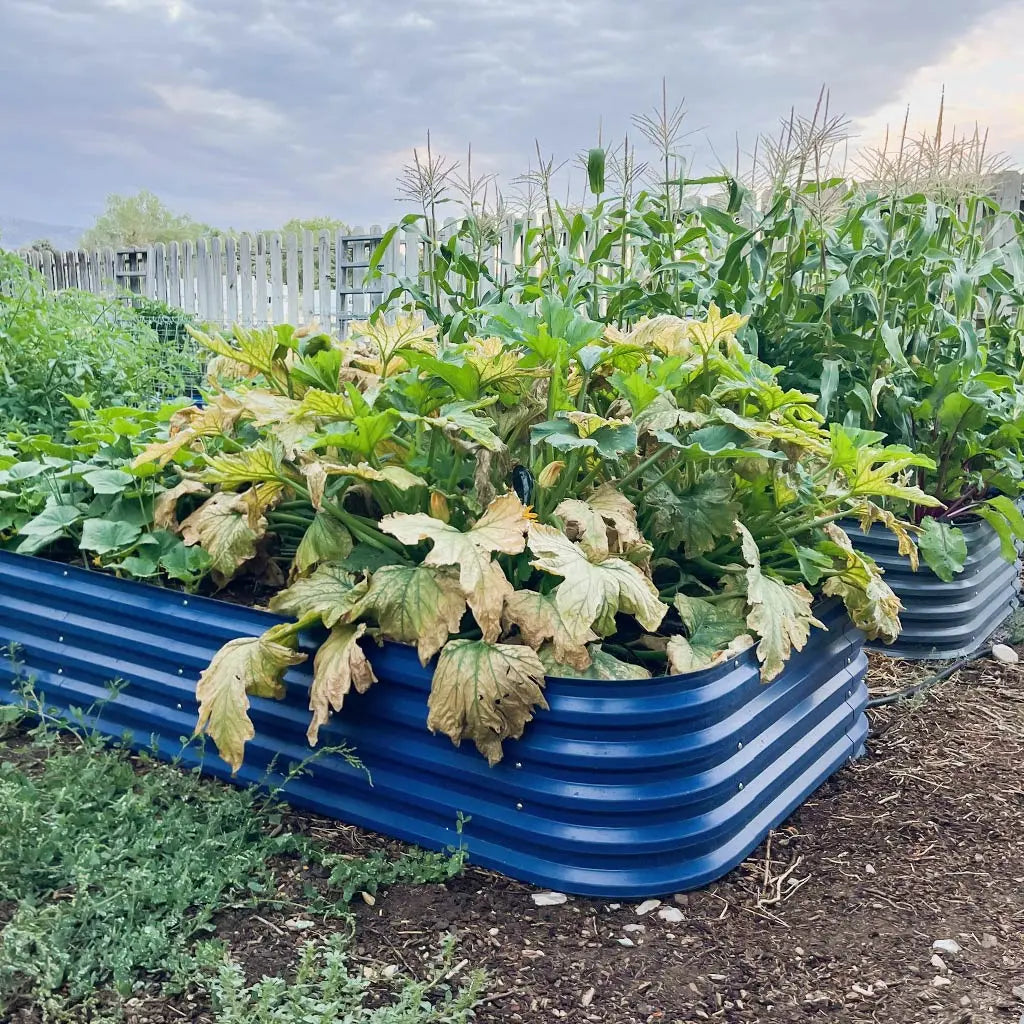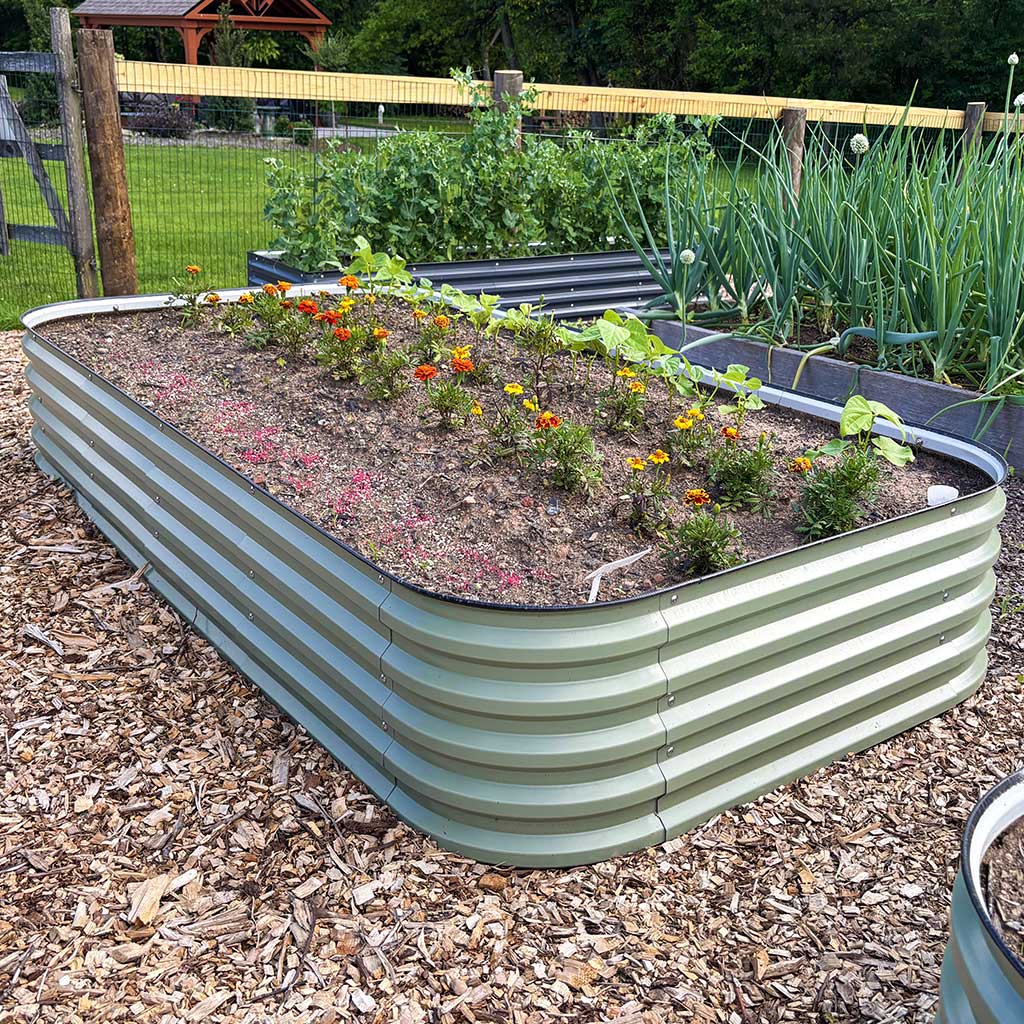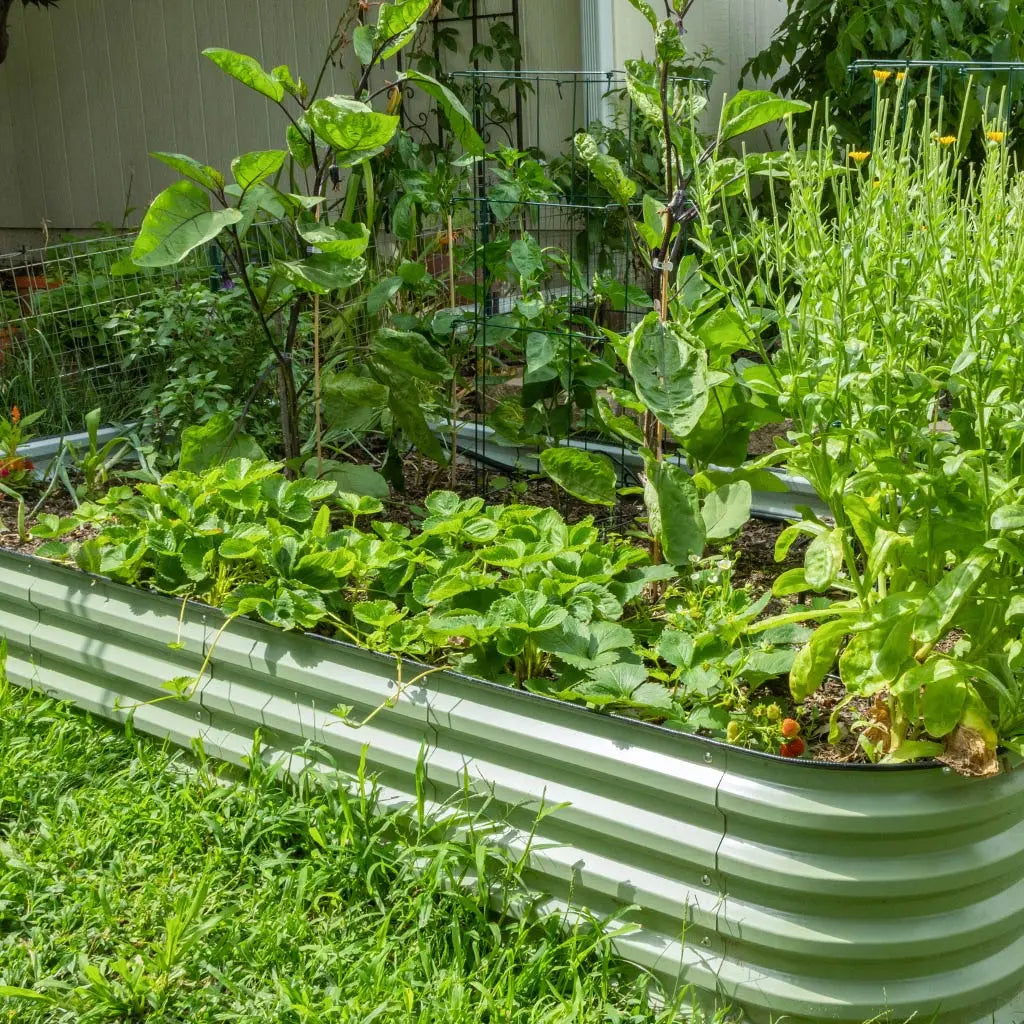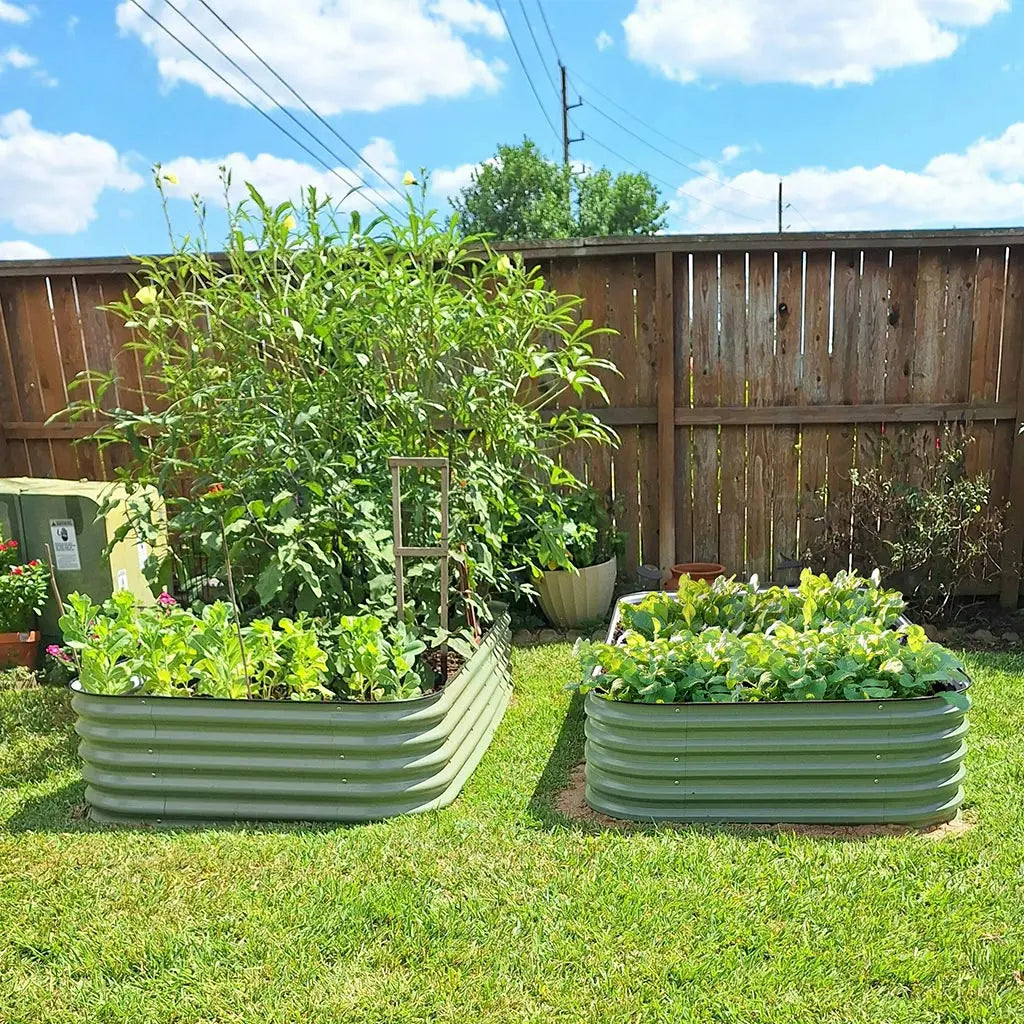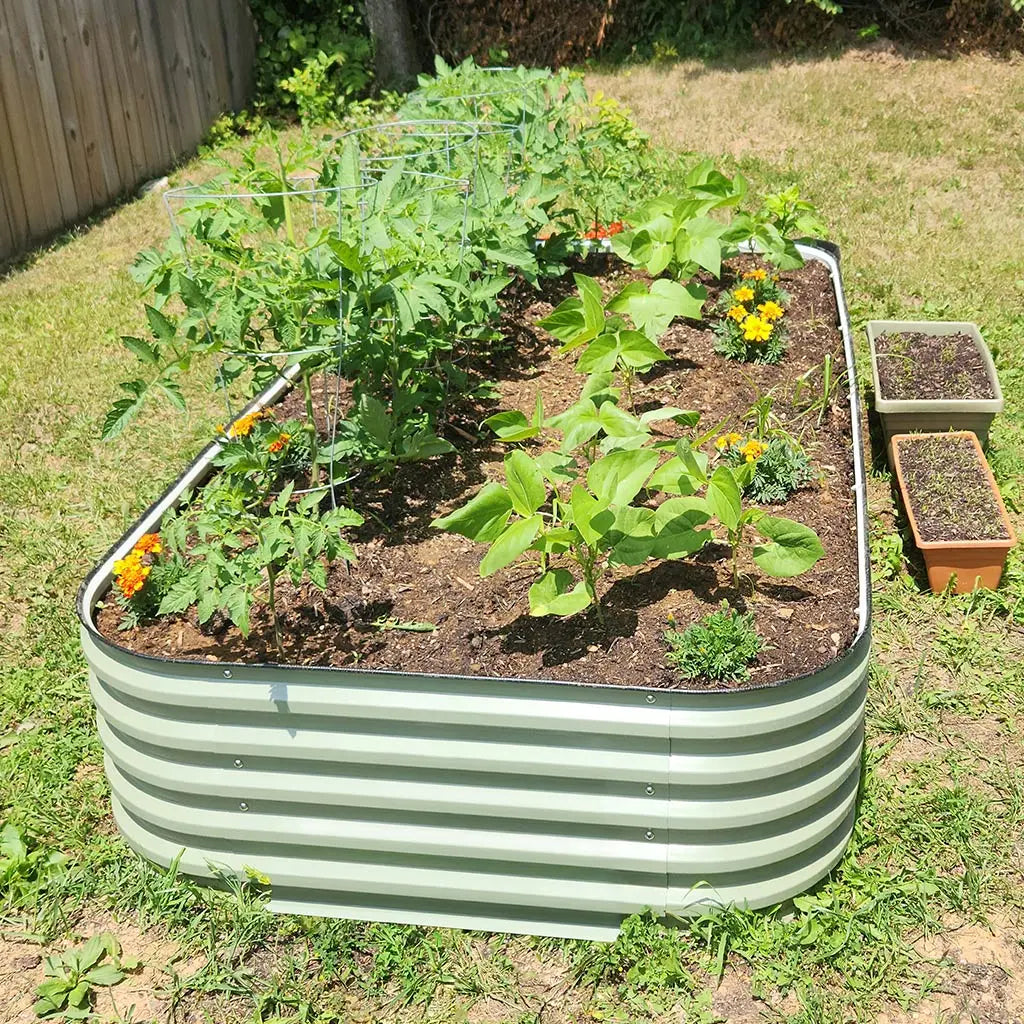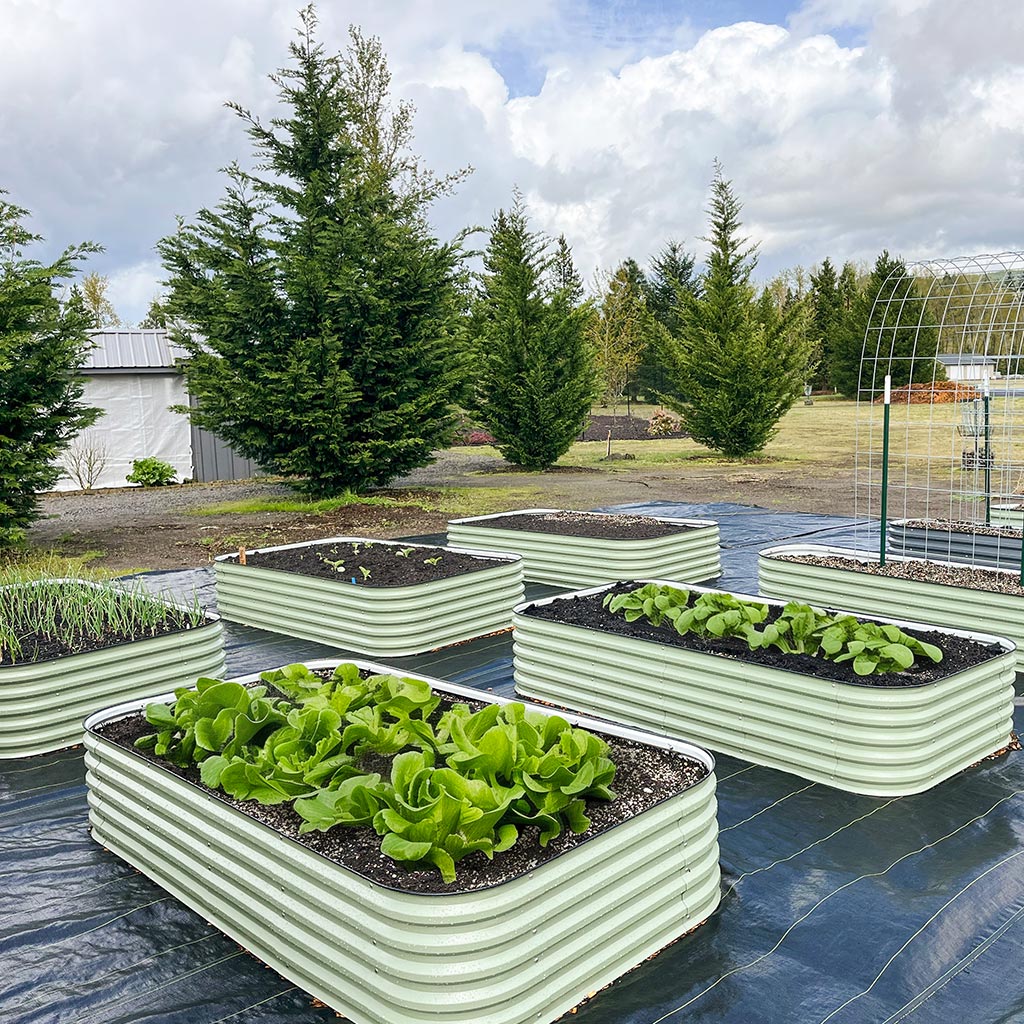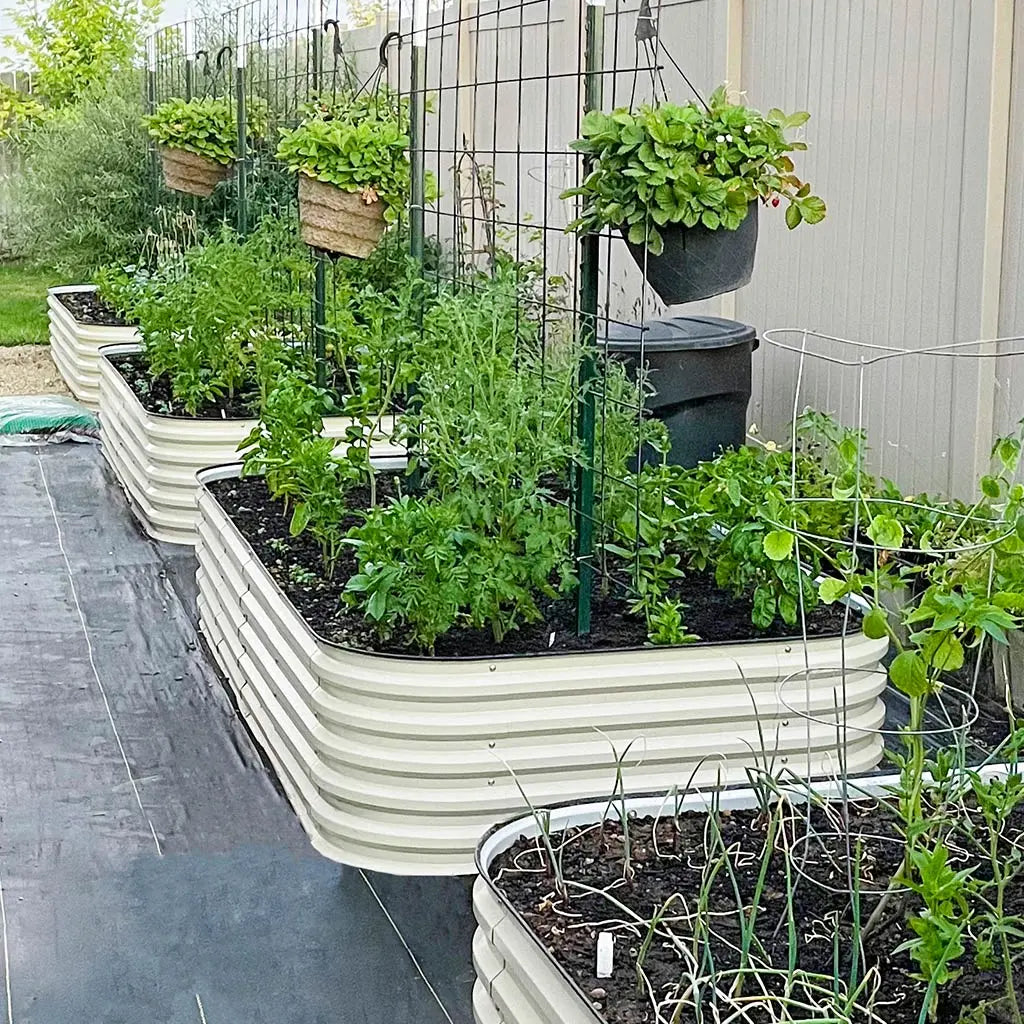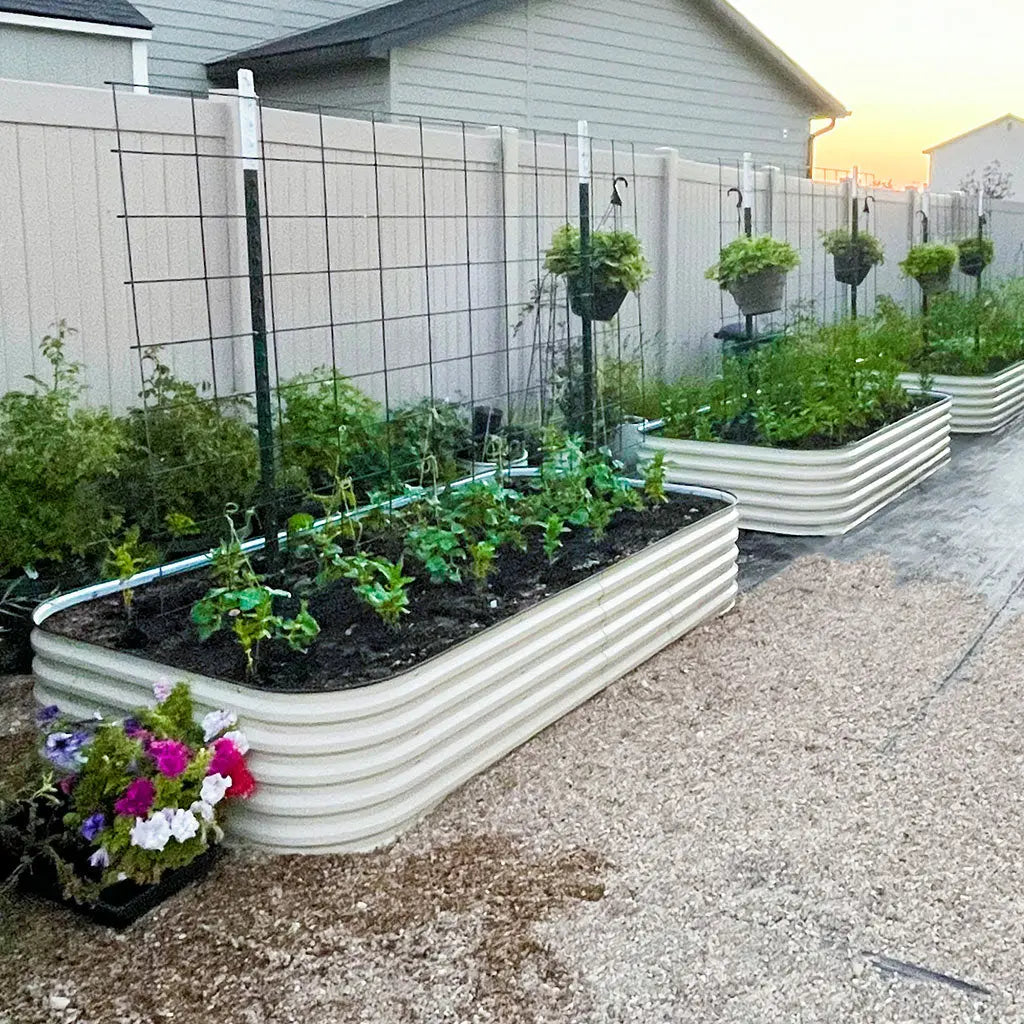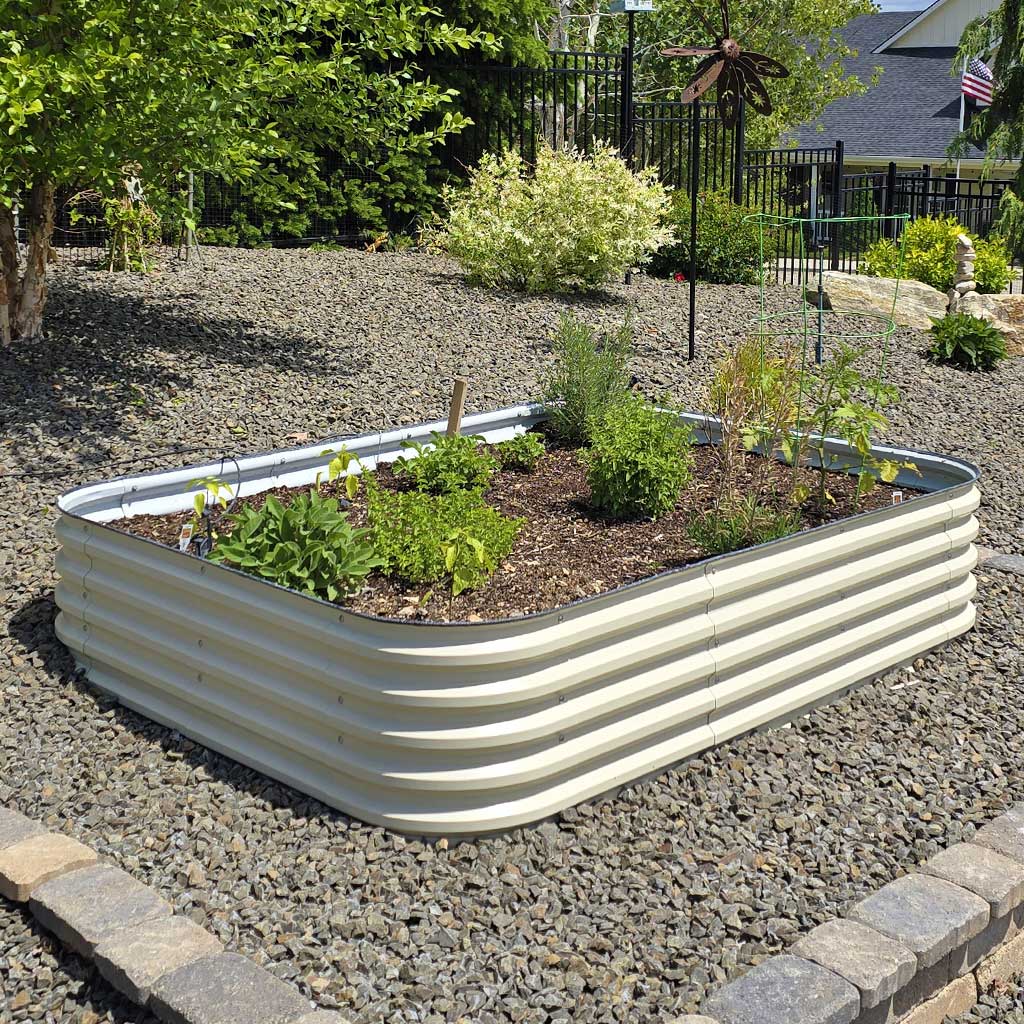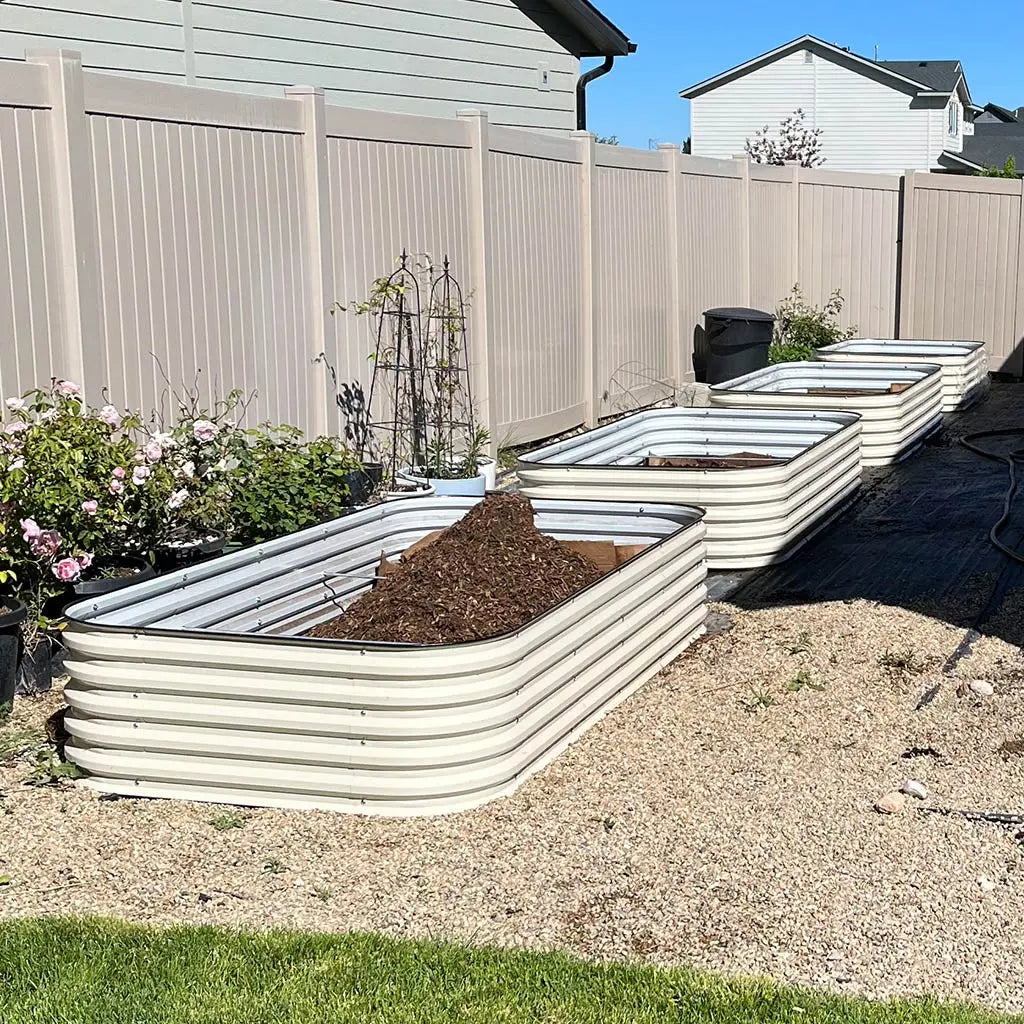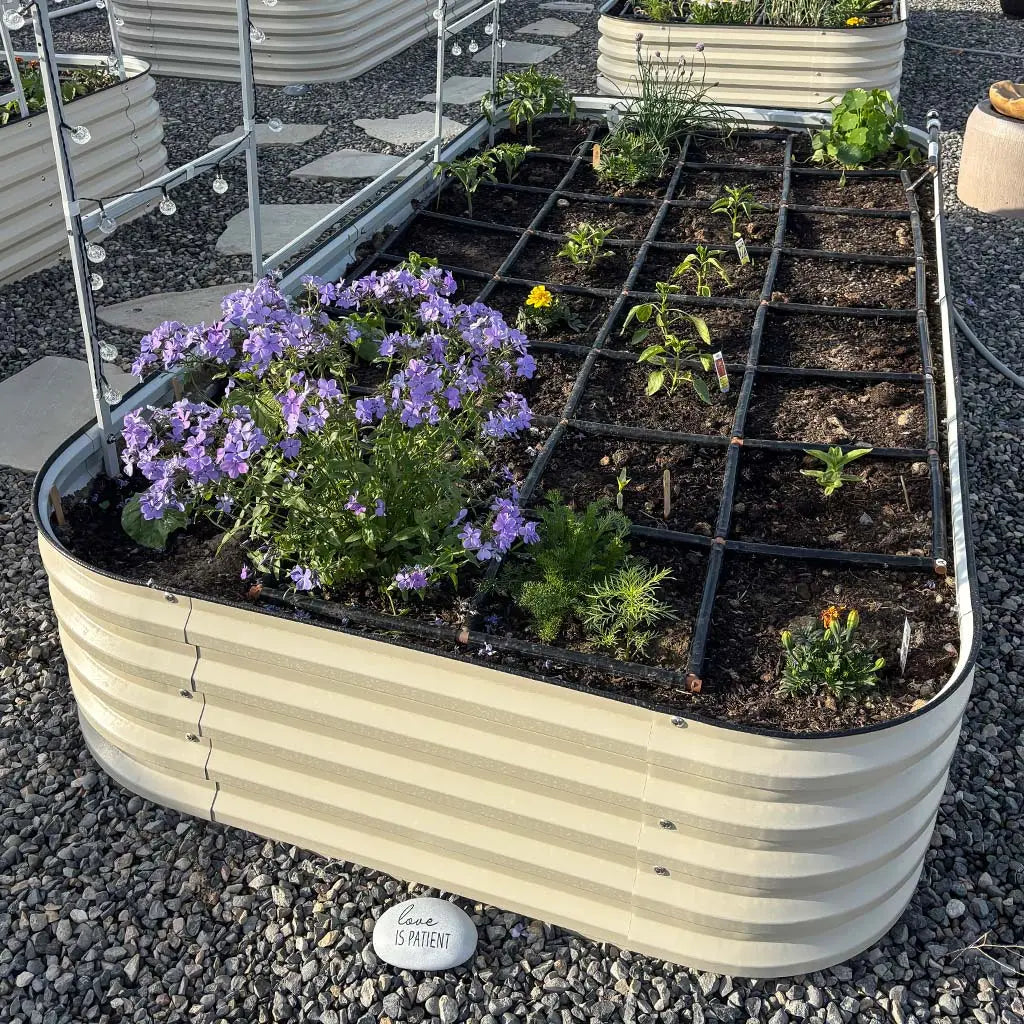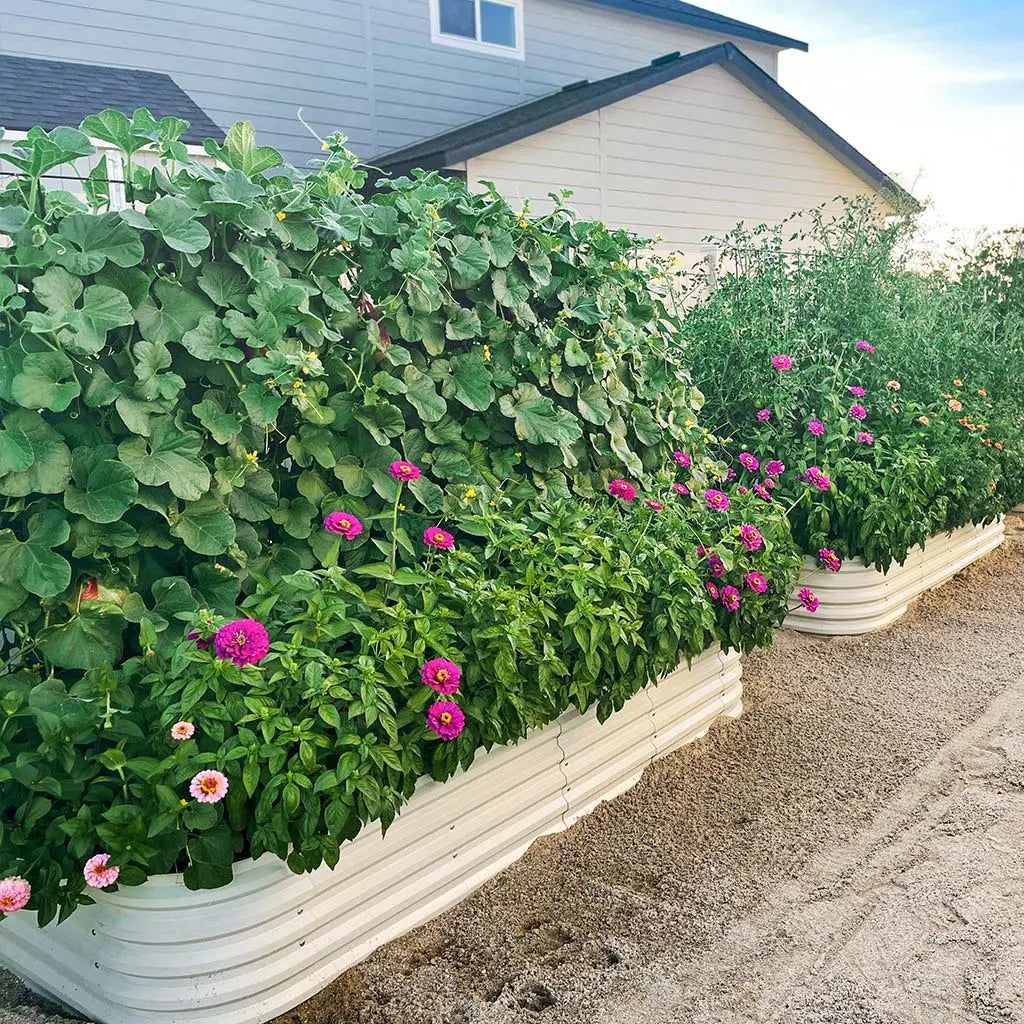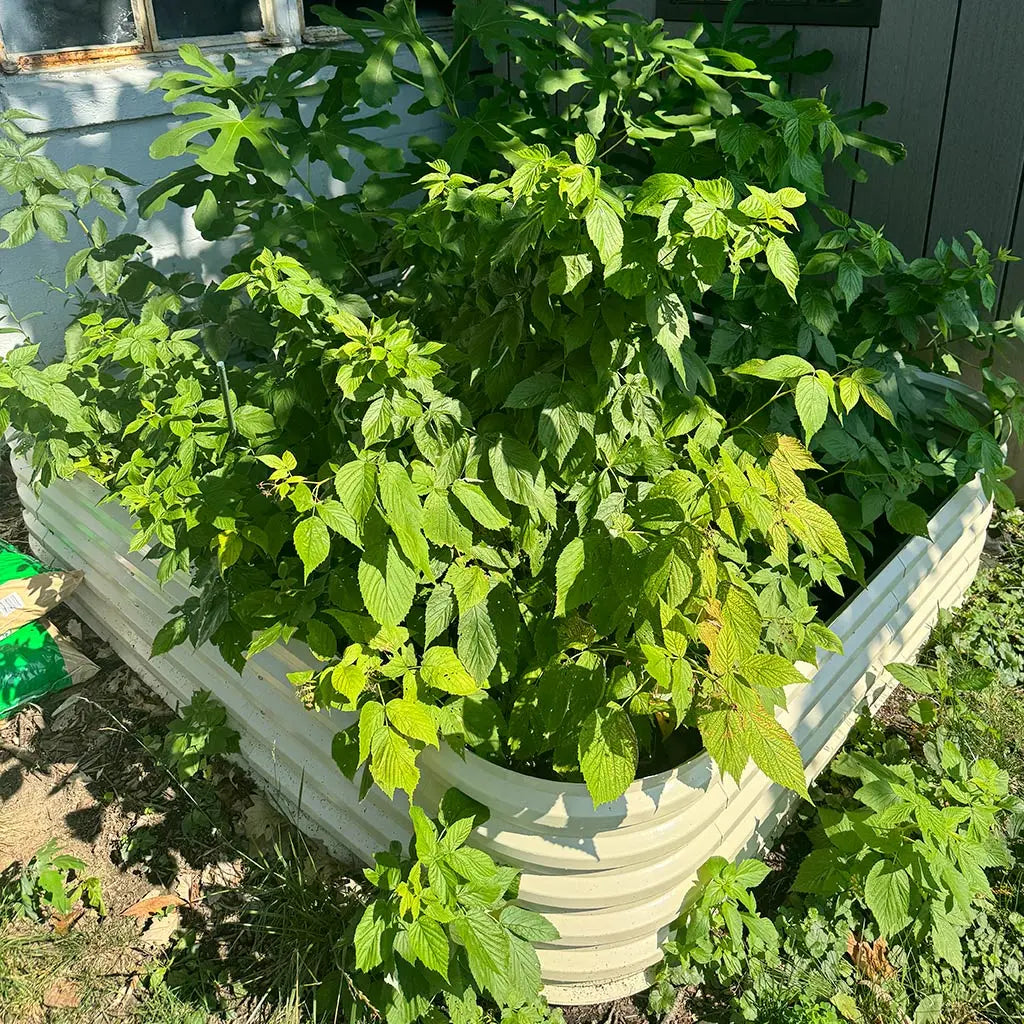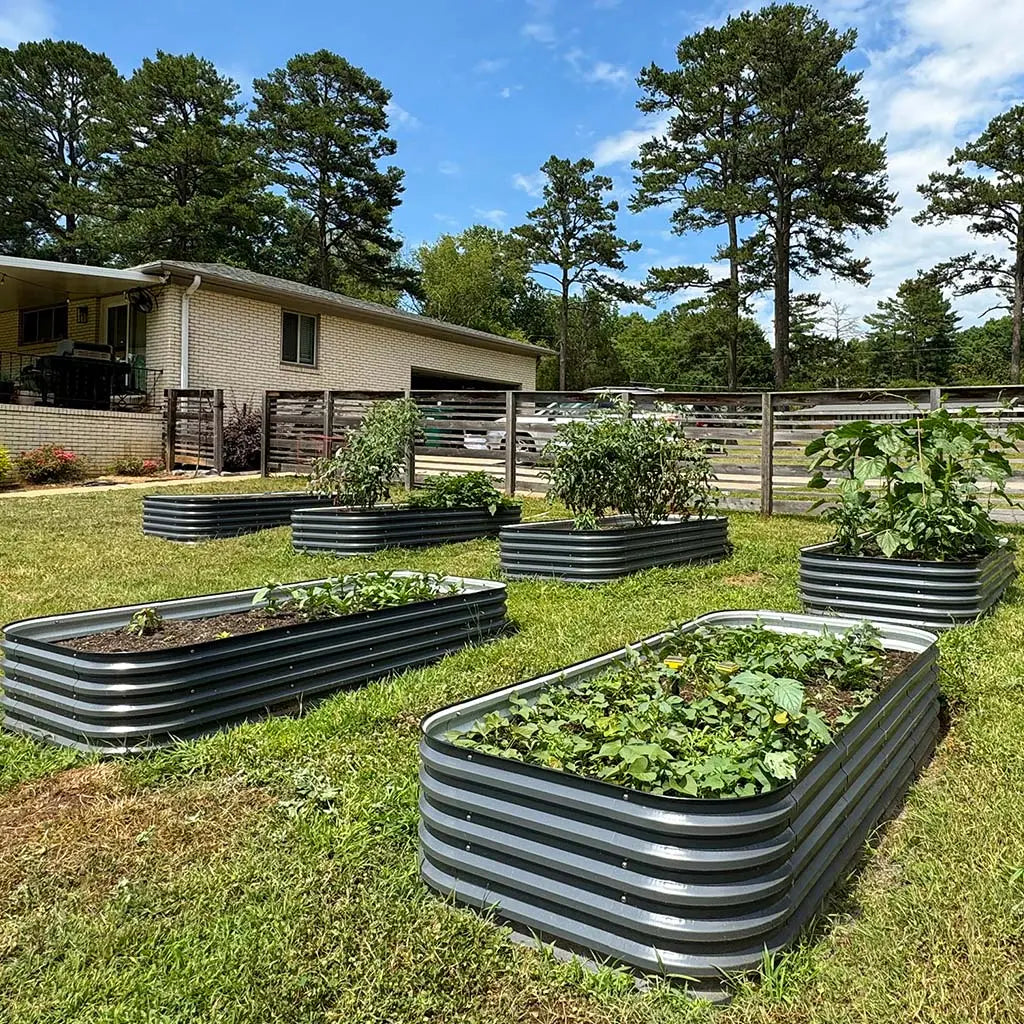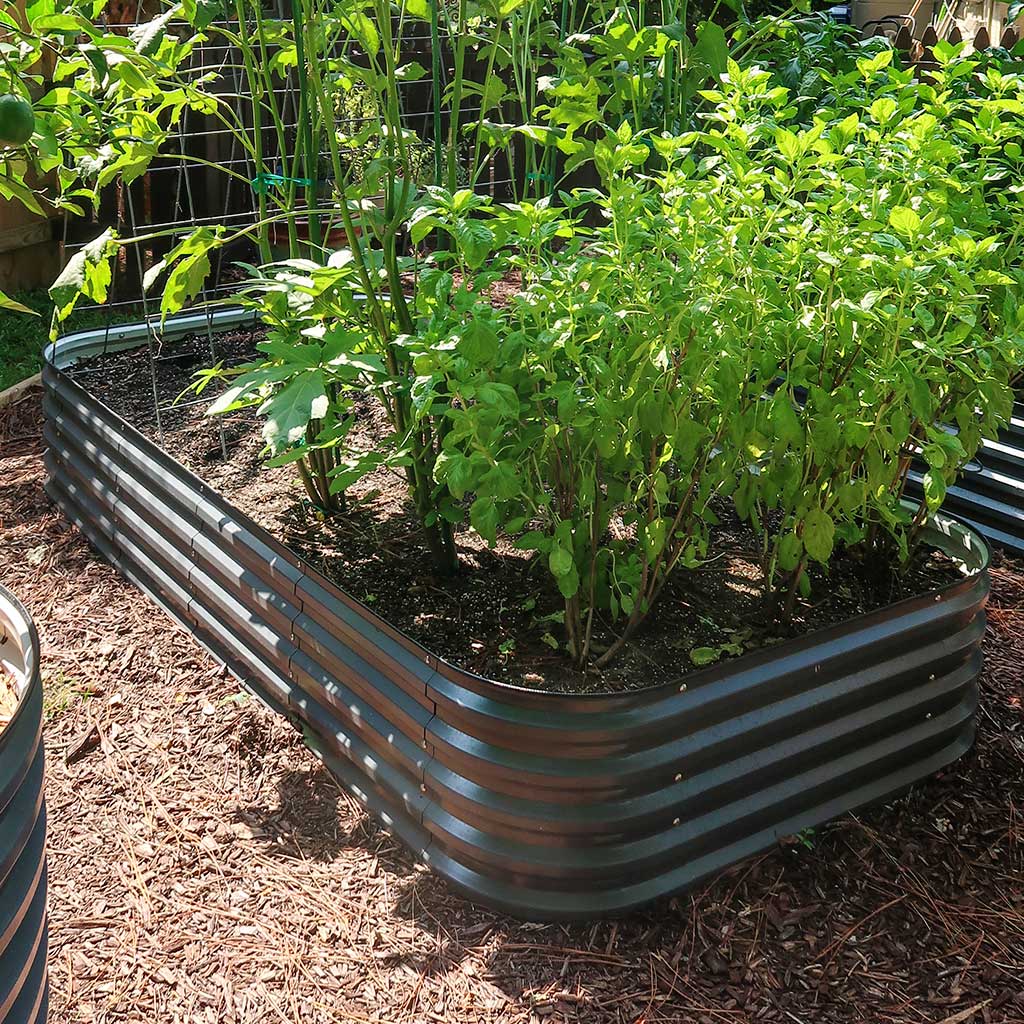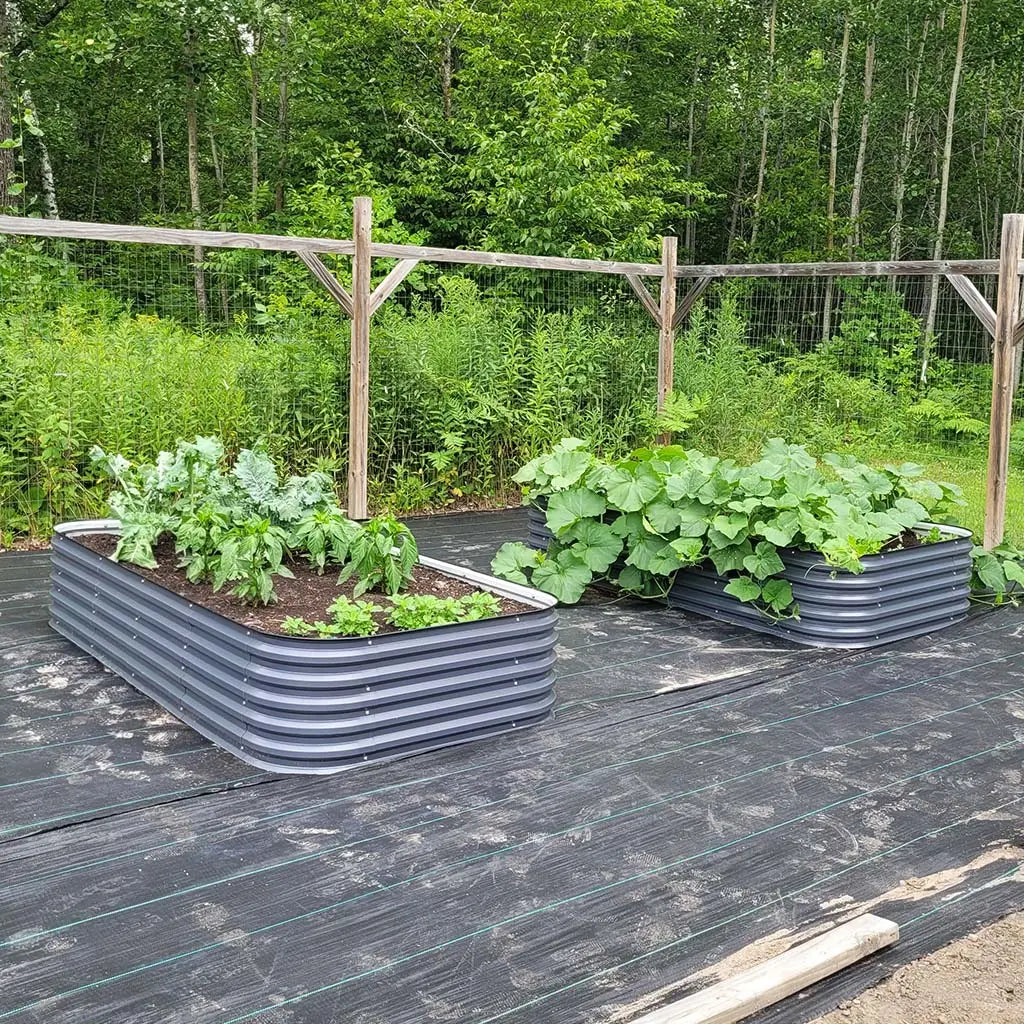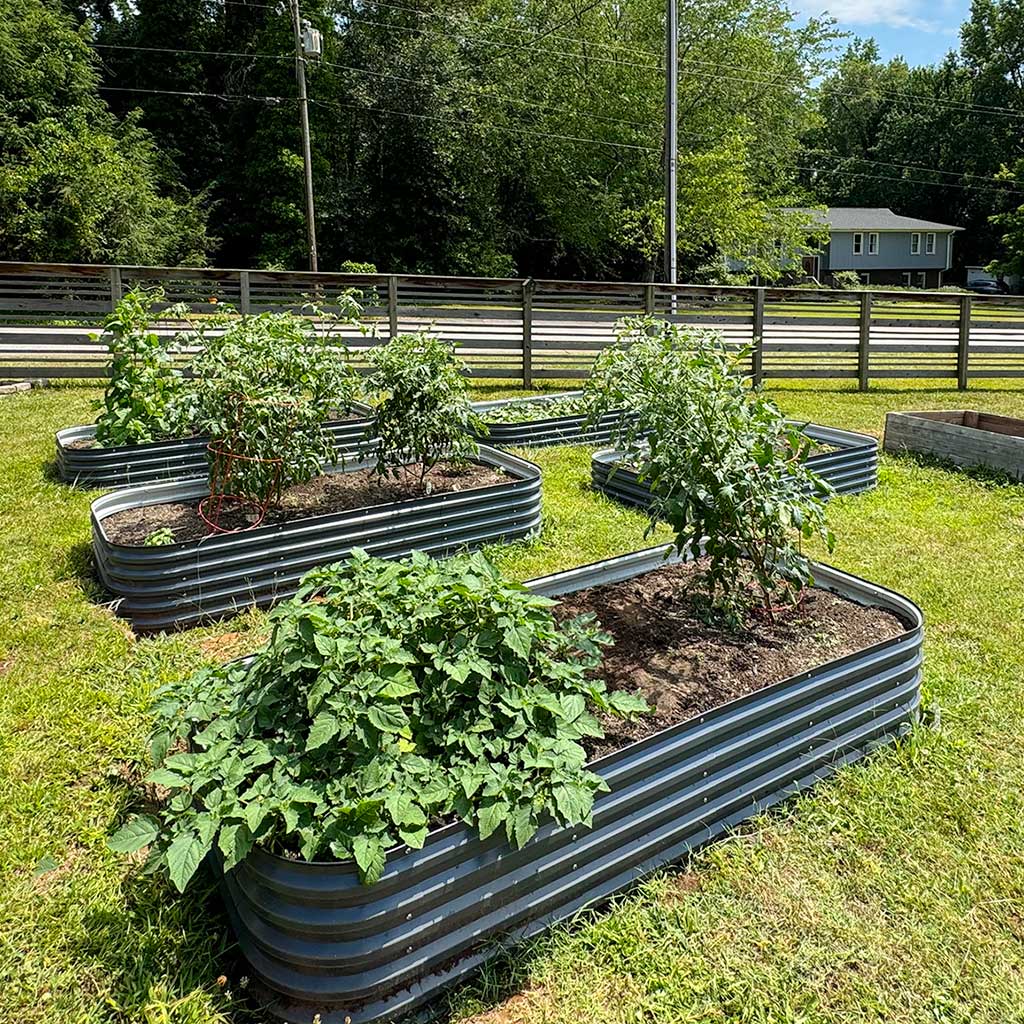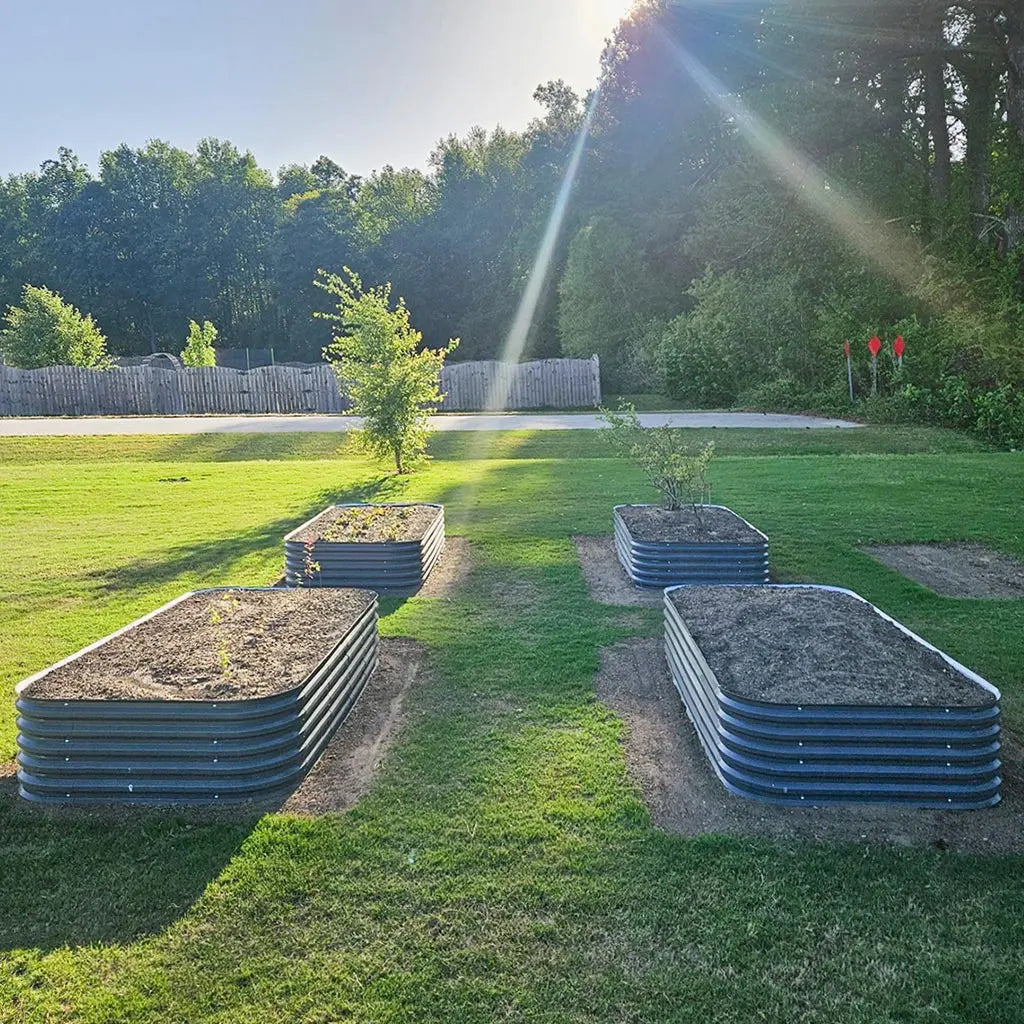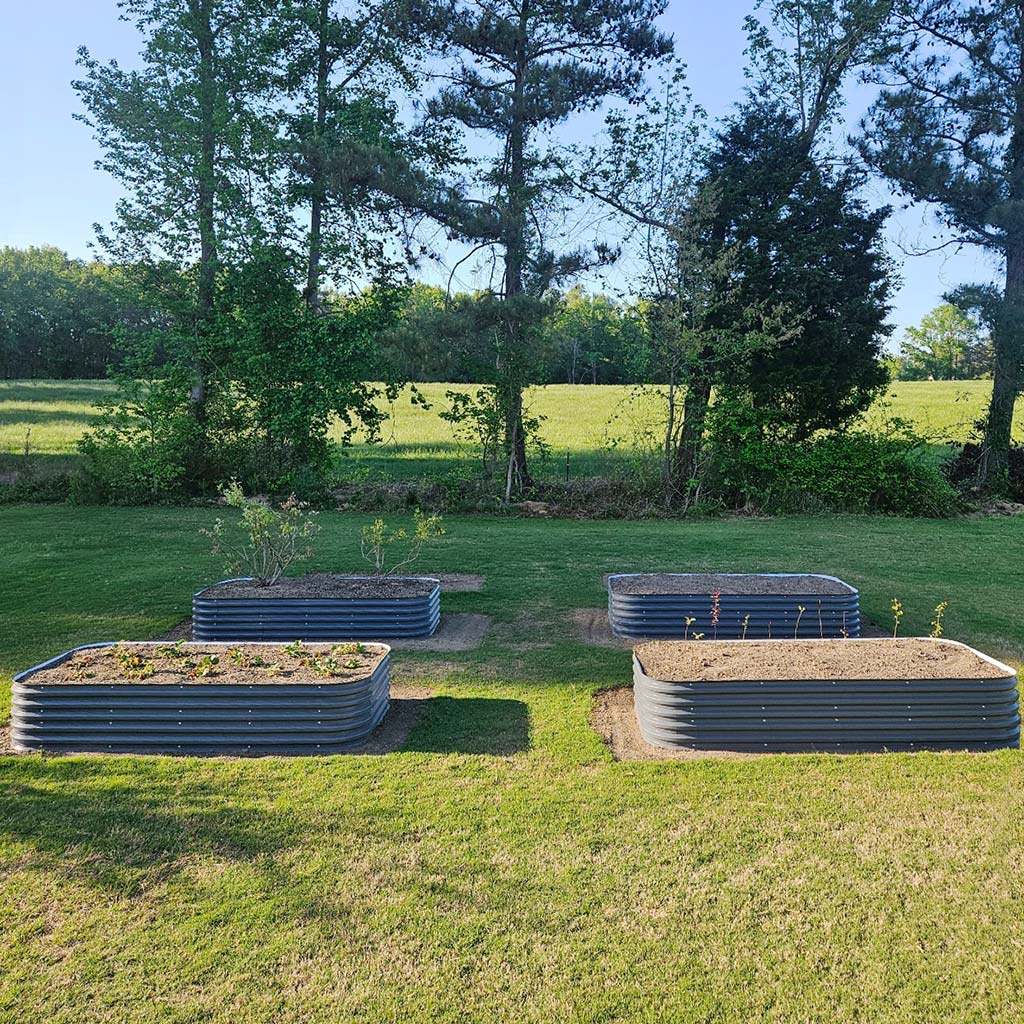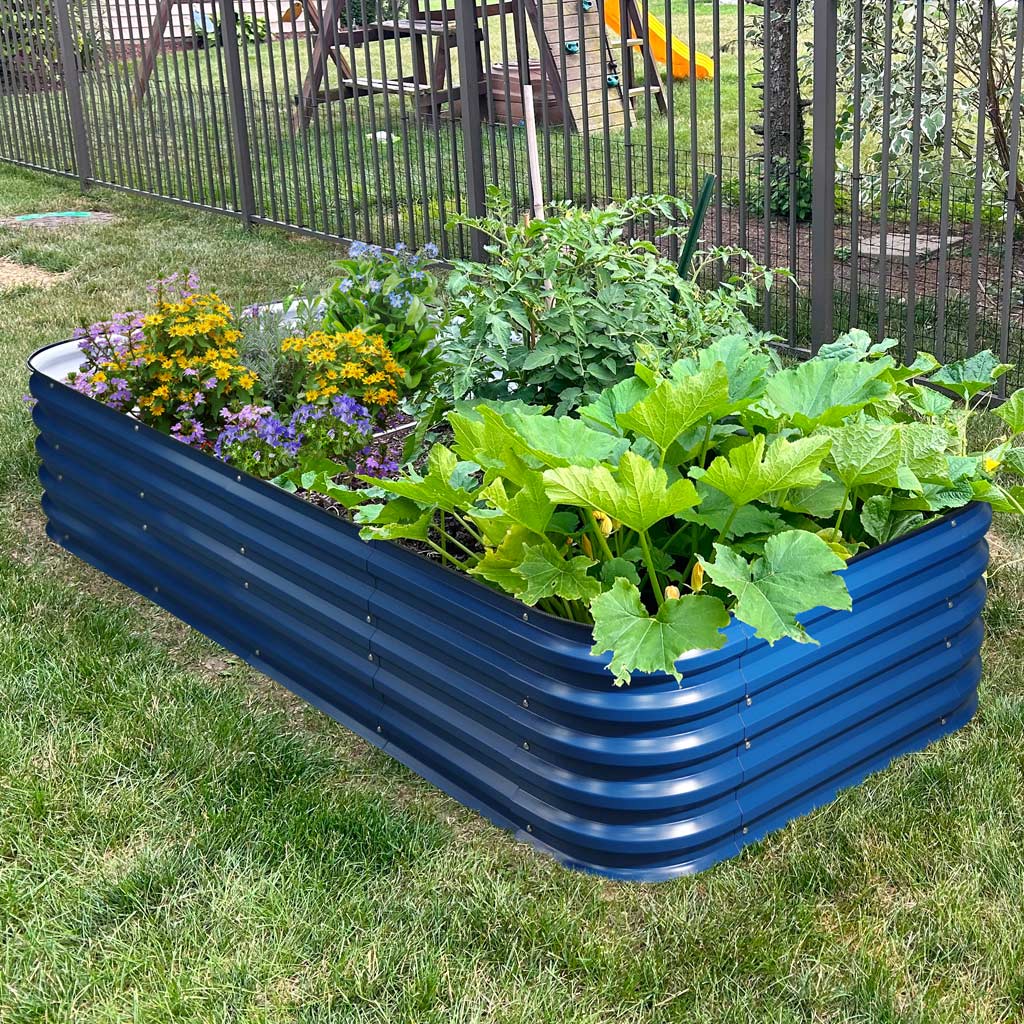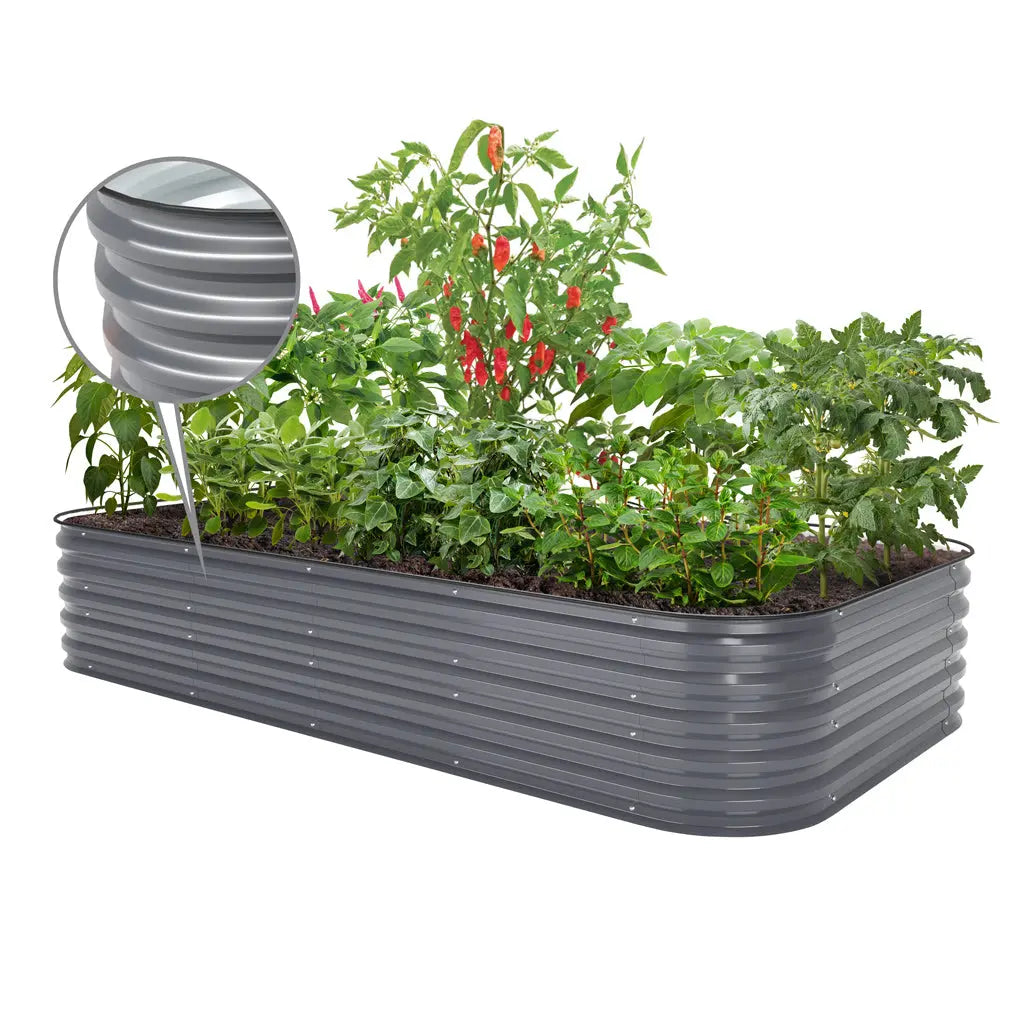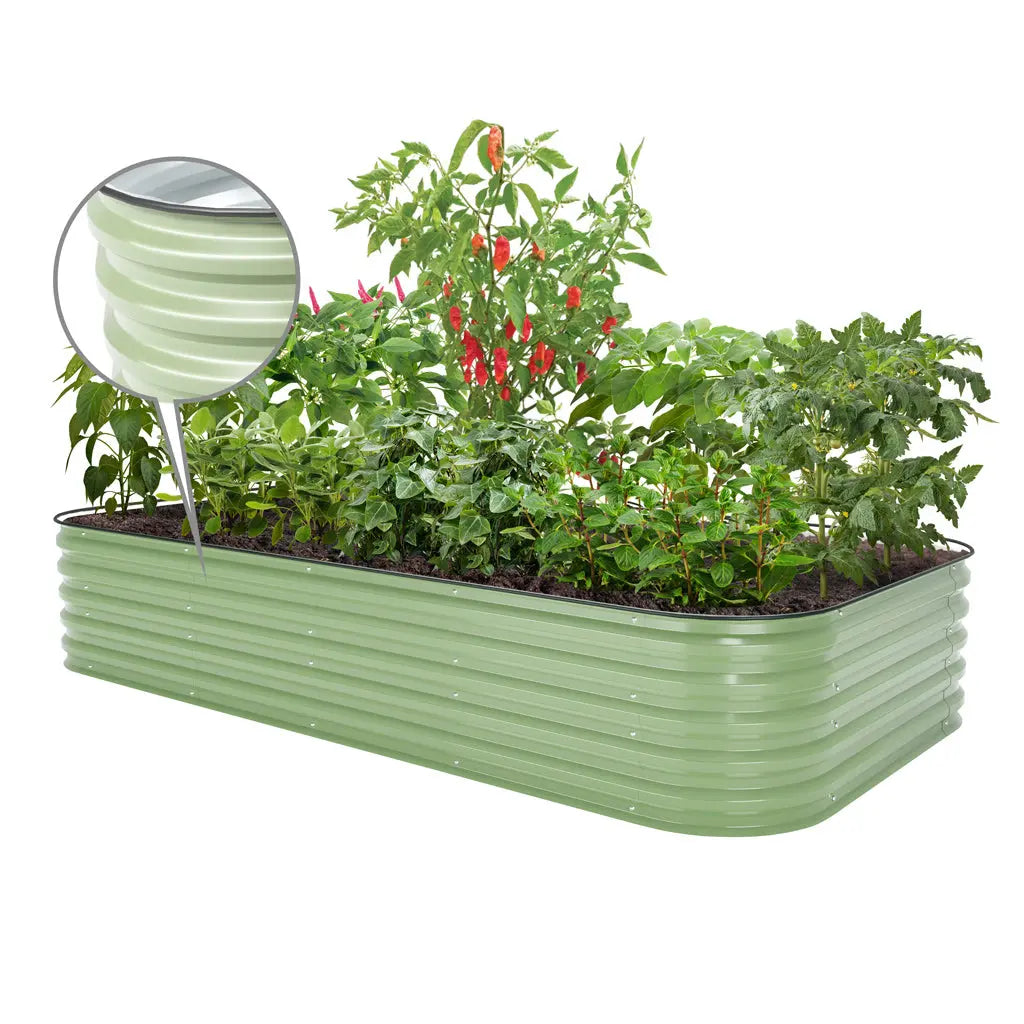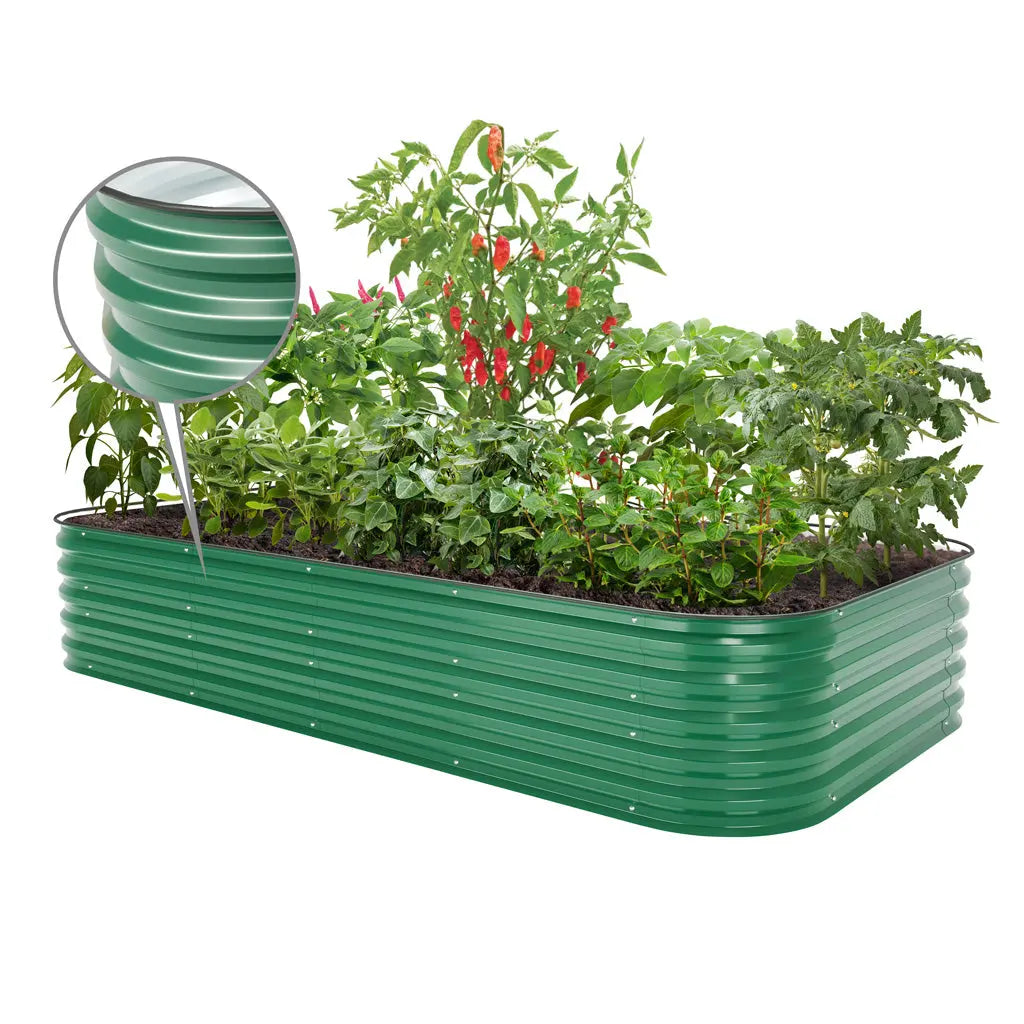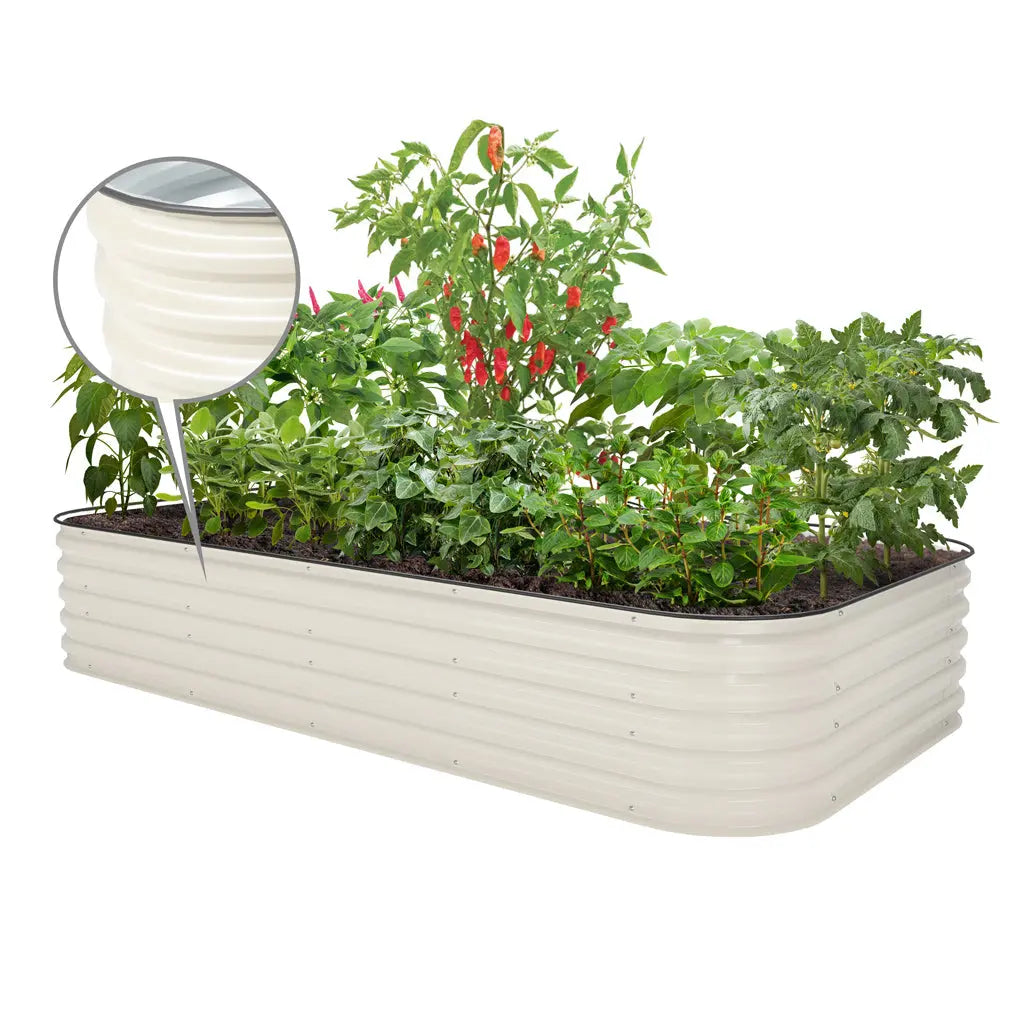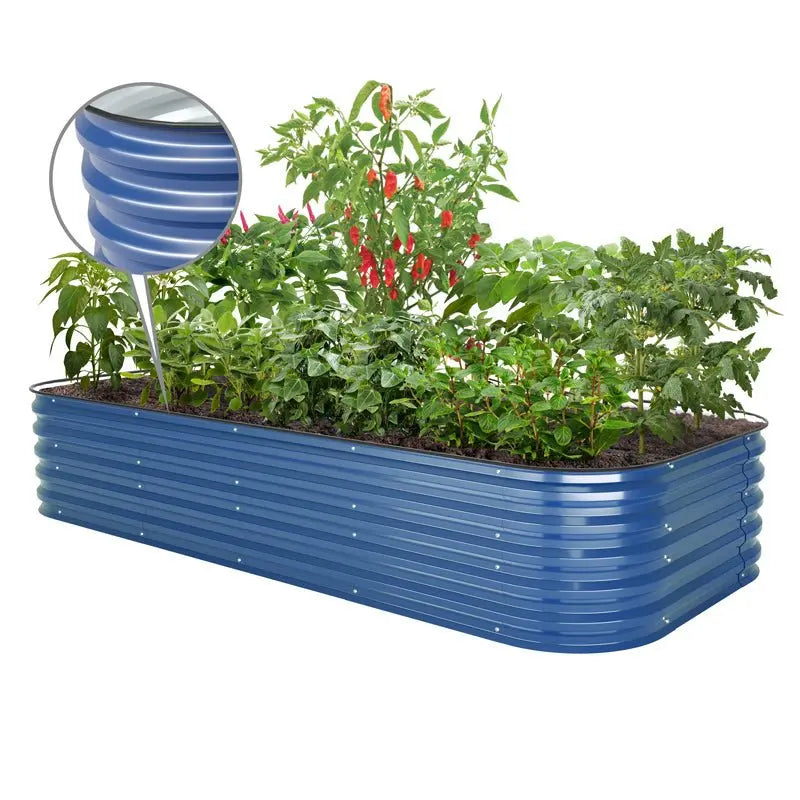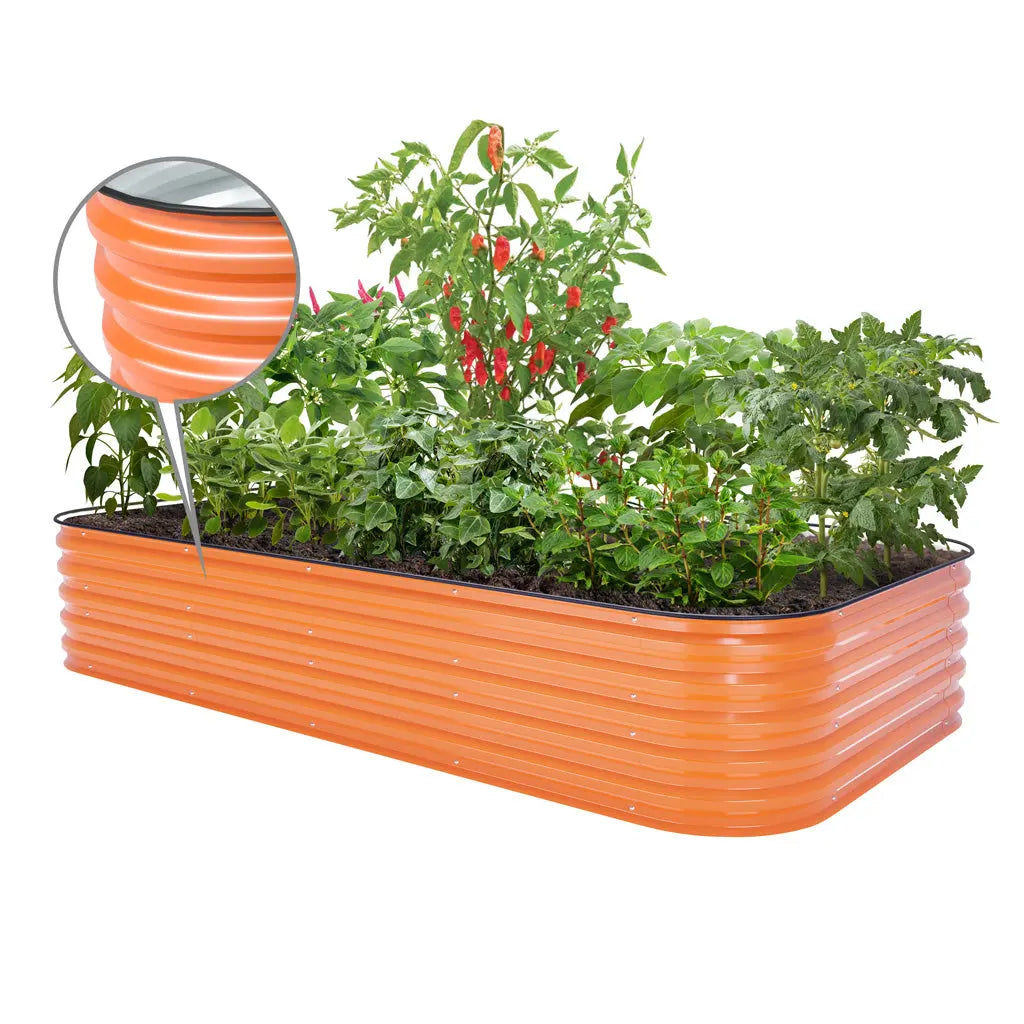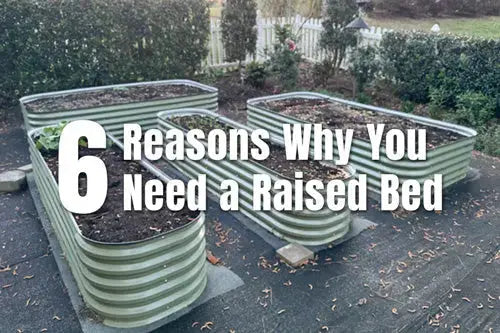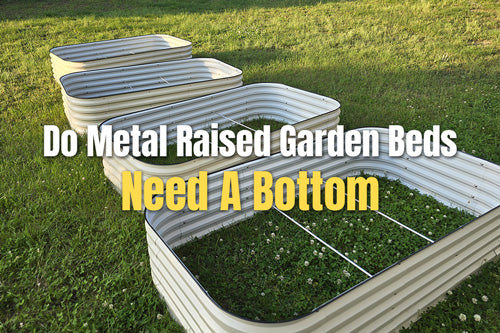Best Drought-Tolerant Plants for Raised Garden Beds
If you live in a warmer climate, how many of your plants have died because they can’t withstand the heat? We know this is quite a bummer, considering you can’t change the weather. However, don’t be fully discouraged just yet! Drought-tolerant plants are here to keep your green thumb growing!
If you want to save water, reduce stress, and still get a lush, thriving garden, then it is time for a few small but smart steps. With that in mind, let's dive into the best drought-tolerant plants you can grow in your raised garden beds.
Why Raised Beds and Drought-Tolerant Plants Go Hand in Hand

Raised beds are great for many reasons. We know that you already know this, but seriously – you get better drainage, control of the soil, and so much more.
The thing is, the soil in the raised beds dries out a lot faster. That’s why drought-tolerant plants are such a smart move. Once you build your raised garden bed, you immediately need to think of these types of plants – ones that can handle a little dryness.
We have two experimental articles about How Metal Raised Bed Color Affects Soil Temperature and Do Metal Raised Garden Beds Heat The Soil that you may want to acknowledge.
What Are Drought-Tolerant Plants?

Drought-tolerant plants are those that can survive hot weather and little water. They do need water every now and then, but they don’t depend on it to thrive. You can easily notice them – they have thicker leaves, deeper roots, and so on.
We decided to give a lot of them a try until we found the ones that fit perfectly for us.
Designing a Raised Bed for Drought-Tolerant Plants
Before you start doing anything, you need to know how to properly set up the space for your plants. We created a game plan for you, just take a look below:
- Use High-Quality Soil - Well-draining and healthy soil is key. It helps roots grow deep, which makes plants more drought-resilient.
- Mulch Everything - Always top your raised beds with a layer of mulch. This keeps moisture in and roots cool.
- Water Deeply and Less Often – You don’t need to water the plants very often, but when you do, be as thorough as possible. By doing this, you let the plants know they need to expand their roots down the raised bed and use all the moisture they can get.
- Group Plants by Water Needs - In larger beds, group plants with similar water requirements. This way, you will not have to water only a part of the raised bed (which barely makes sense anyway).
The Best Drought-Tolerant Plants for Raised Beds

When it comes to drought-tolerant plants, we managed to find the ones that thrive and look spectacular! We created a small list just for you – take a look below!
- Lavender – Lavender is such a strong plant with an amazing scent. It needs almost no care once established and thrives in full sun and dry soil.
- Rosemary - This herb pulls double duty - delicious in the kitchen and a low-maintenance garden superstar. It loves dry conditions and full sun.
- Yarrow - Yarrow’s feathery leaves and flat-topped flowers attract pollinators and handle drought with ease. It’s one of our go-tos for filling gaps.
- Sedum - If you haven’t tried sedum in your raised beds yet, give it a shot. It stores water in its leaves like a cactus and looks great spilling over the edge.
- Oregano and Thyme - Both herbs are Mediterranean natives and absolutely perfect for dry conditions. They need little water and bounce back easily from dry spells.
- Echinacea - This one attracts bees and butterflies, and it will give your garden a pop of color in an instant!
- Zinnias - These full sun drought-tolerant plants bloom all summer long!
Tips for Getting Started with Drought-Tolerant Gardening

But, of course, we can’t just leave you with a list of drought-tolerant plants without giving you some tips to help you get started! From our experience, we learned a lot of things along the way, so here we have them, just for you:
- Start with Young Plants - Seedlings that are grown in your local climate tend to adapt better to dry conditions. But if you’re buying from a nursery, give them a bit more love when transplanting.
- Don’t Overwater Early On - It’s tempting to flood your beds after planting, but doing so can train the roots to stay shallow. We water just enough to keep the soil moist, then gradually reduce as the plant settles in.
- Choose the Right Container - If you're using metal raised beds like ours, keep in mind they heat up quickly. That’s great for early growth, but it can also dry the soil out faster. That’s another reason why drought-tolerant plants are ideal - they can handle the heat.
What We Avoid Planting in Dry Beds
Not every plant loves being thirsty. We’ve learned to avoid water-hungry varieties like:
- Lettuce (unless heavily shaded)
- Spinach
- Basil
- Cucumbers
These crops do better in cooler seasons or in raised beds, where we can easily water more often.
Why We Love Raised Beds for Dry Gardening
We’ve found that raised beds give us more control. With smart soil prep, deep mulch, and plant choices tailored to dry conditions, we get robust, blooming beds that don’t leave us constantly reaching for the hose. They’re also great for experimenting.
Want to test different varieties of drought-tolerant plants in the same area? Raised beds make that easy.
17'' Tall 4x8 Metal Raised Garden Beds (10 in 1)【Upgrade 2.0】
A 4x8 raised garden bed is the perfect solution for expanding your garden's potential. Alongside our popular 2x8 raised beds option, the 4x8 bed stands out as a top choice among home gardeners. Its generous size offers ample space to grow a variety of vegetables, herbs, or flowers—all in one well-organized area.
This layout allows you to maximize planting efficiency while maintaining easy access for watering, pruning, and harvesting. Whether you're a seasoned grower or just starting out, the 4x8 bed gives you the room and flexibility to cultivate a thriving garden season after season.
Benefits of using a 4x8 raised garden bed
Durable and Longevity
Surprisingly, our 4x8 raised garden bed is crafted from high-quality Zn-Al-Mg steel, known for its durability. As a result, the durable design ensures the bed is resistant to rust, so gardeners won't need to worry about repairs or replacements each year. This not only reduces maintenance costs but also minimizes hassle.
Better Drainage
Surprisingly, the 4x8 raised garden beds effectively improve soil drainage. Because the bottomless design avoids water pooling in the soil after rain or watering, preventing root rot problems caused by waterlogging. Good drainage helps maintain proper soil moisture levels while avoiding root disease and plant growth problems associated with standing water.
Pest Control
Because the raised garden beds are high off the ground, they effectively reduce plant infestations by ground pests. Many common pests, such as ants, snails, and subterranean bugs, have a harder time climbing this high. this design reduces exposure to pests, reduces damage to plants, and reduces reliance on chemical pesticides.
4x8 Raised Garden Bed Plans
Here are the steps to set an 8x4 raised garden bed:
- Firstly, choose a location by finding a sunny spot. Then, determine the size by selecting your bed dimensions. Next, select filler using logs, organic compost, and leaves.
- After that, prepare the soil by filling it with quality soil and compost, followed by planning the layout by arranging plants with companion planting in mind.
- Subsequently, install the bed by assembling and placing the raised bed, then plant seeds or seedlings following spacing guidelines.
- Moreover, water and mulch to keep the soil moist, and add mulch.
- Additionally, maintain the bed by weeding regularly and monitoring plant health, and finally, rotate crops by changing plant locations annually for soil health. As well, here is the 4x8 raised garden bed planting layout you may want to refer to.
Conclusion
To garden means to experiment, and sometimes to take risks. It also means you need to adapt to the weather conditions. With drought-tolerant plants, a little mulch, and a raised bed or two, you can create wonders beyond your imagination! And you don’t even need that much water for them. By doing this, you will save a lot of time and still have a wonderful garden, even when summer is in full swing. So keep going, and check out our other blog about 5 Drought Tolerant Perennials For Your Flower Garden.




























